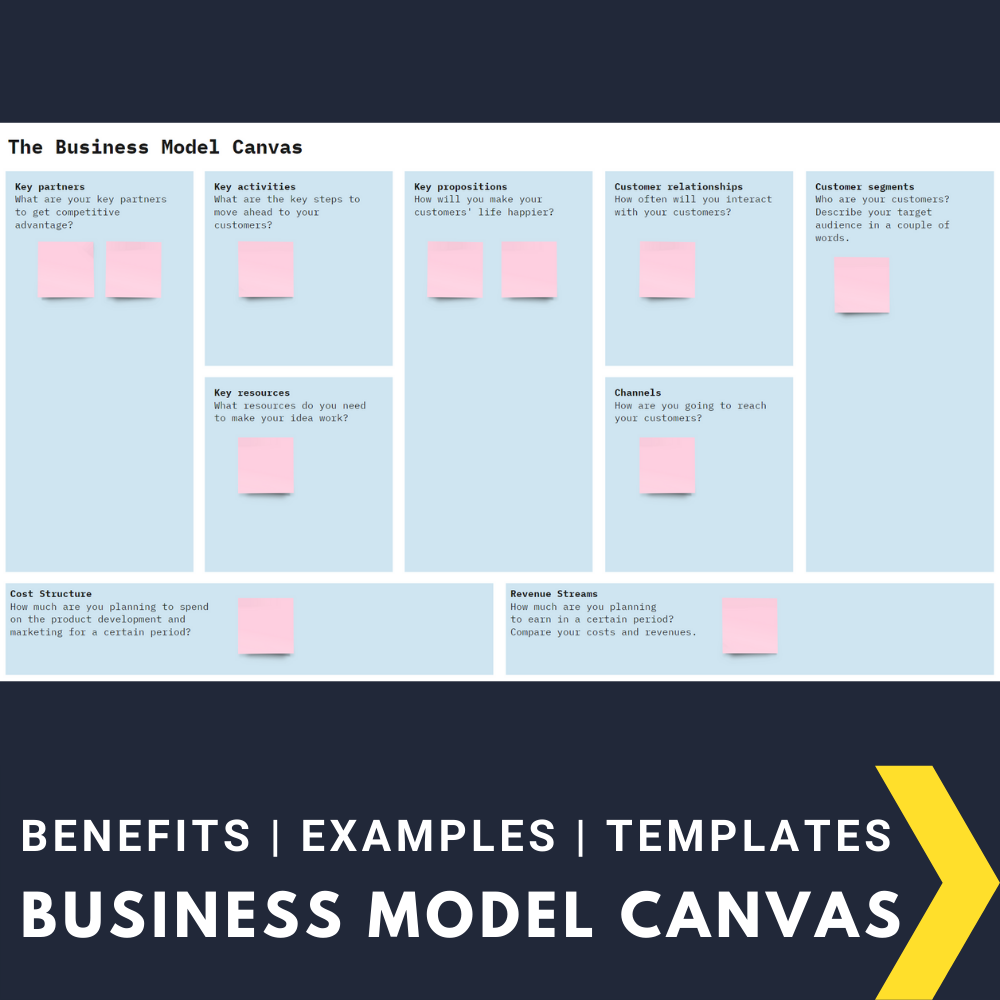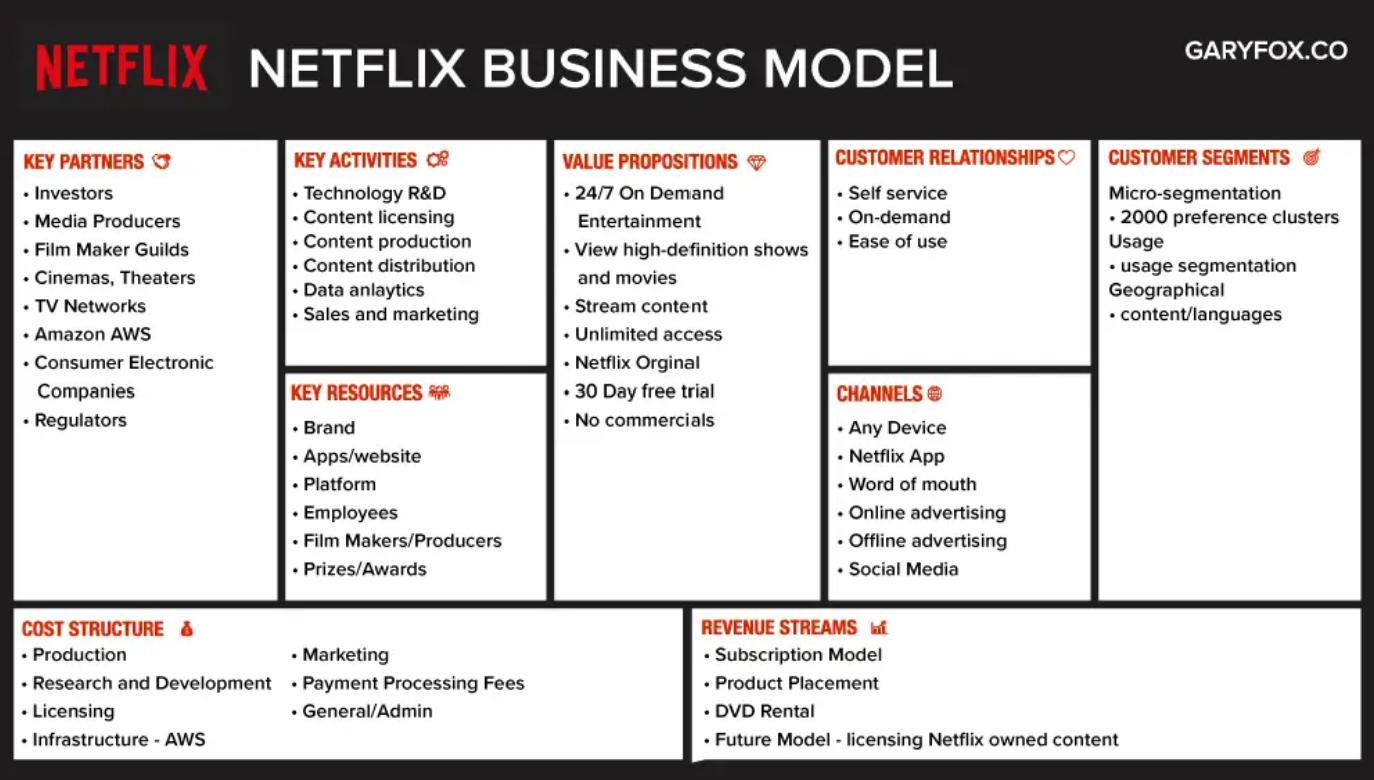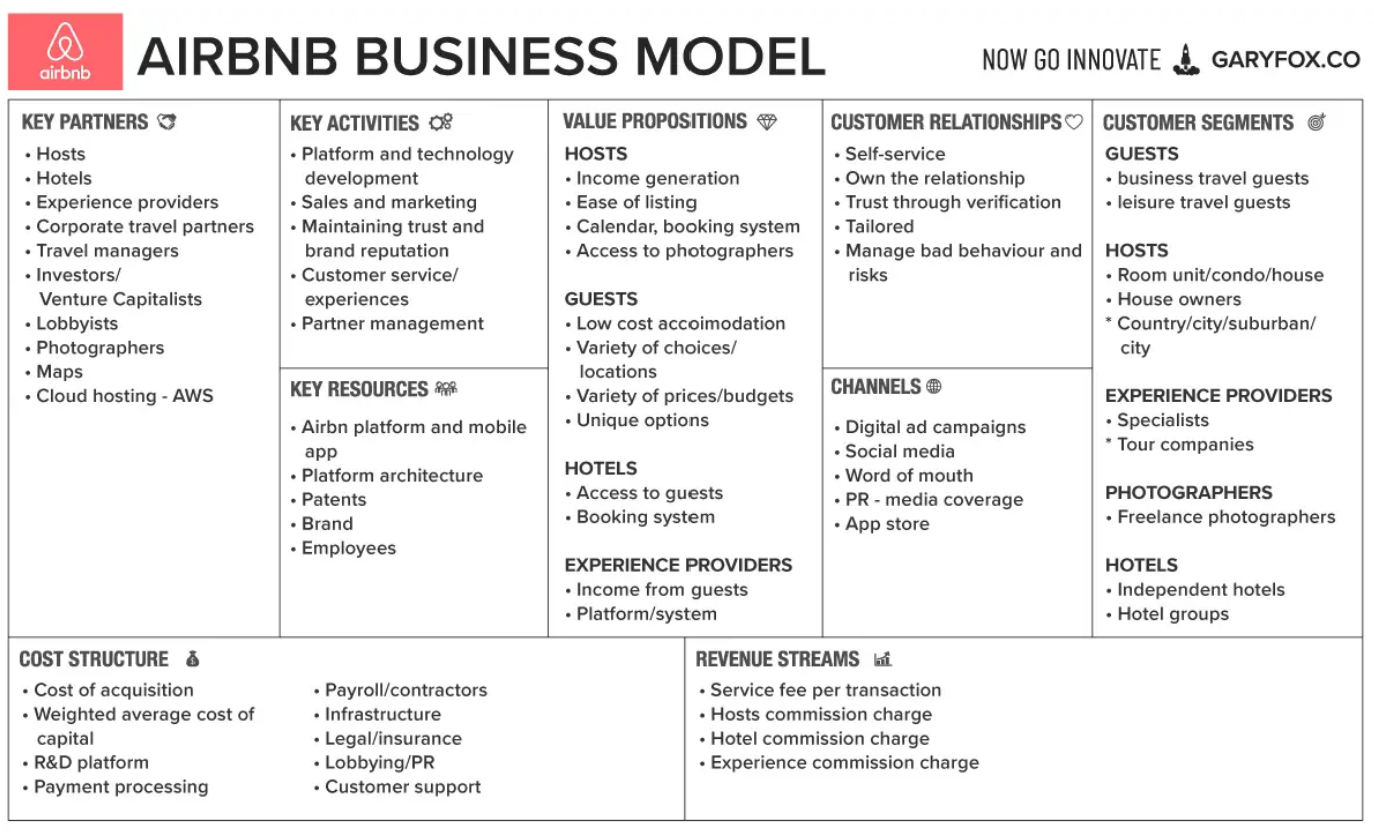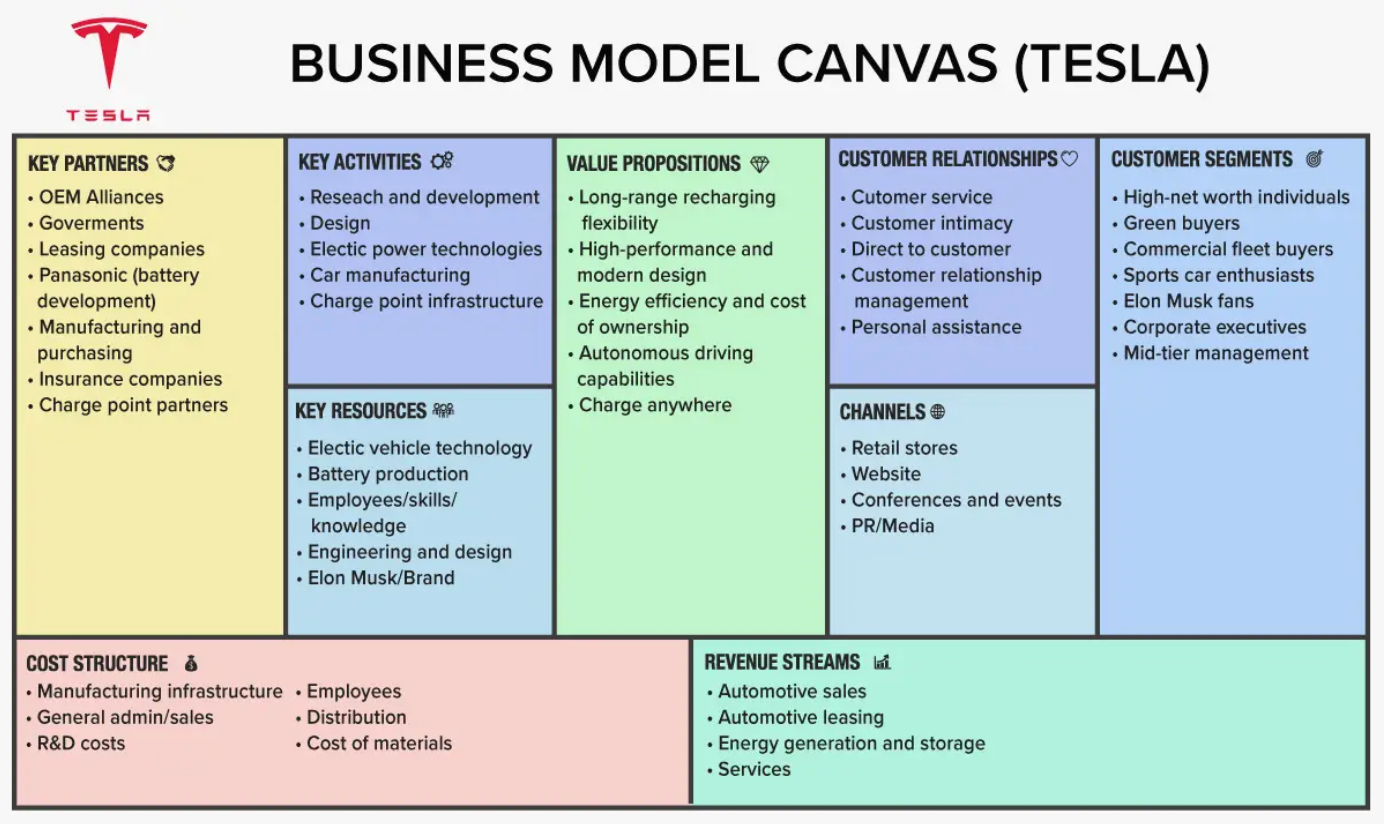An Overview of the Business Model Canvas with Templates and Examples
Summary: The Business Model Canvas (BMC) is a visual tool for showing how an organization creates and delivers value to its customers, including descriptions of the key suppliers, activities, how it makes revenue, and the cost structures to deliver that value.
From a business process improvement perspective, I think of the Business Model Canvas being very similar to the SIPOC Diagram we use in Six Sigma. Visual diagrams like these help simplify complex business processes that all have the same goal: to deliver value to customers in the most effective, strategic way possible. And this one-page document in a visual model are certainly a lot easier to read and understand than a long document or presentation deck. Instead of the traditional structure of a business plan, which can span hundreds of pages, now you can look at one single page diagram and understand how a business operates.
While the layout of the Business Model Canvas and Lean Canvas are the same, several of the components inside the canvases are different. Depending where your organization is in its maturity may impact which canvas tool you use.
Earlier this year, I used a Business Model Canvas to launch a new product. It helped me in several different ways. For example, as I worked through completing the Canvas, it helped me understand the next steps I needed to take to round out the BMC. It also helped me create some key metrics to track that I had not thought about until I started completing these different components. The Business Model Canvas approach really helped me think about my customer base, customer experience, and the competitive advantage I could create to compete in the market.
In this article, I will highlight both the Business Model Canvas, and provide examples of how it works and how to create a BMC for your business.
Overview of the Business Model Canvas
The Business Model Canvas was first developed by Alexander Osterwalder in 2005 and has since been a popular visual aid for startups and executives. The BMC was based on some earlier work Osterwalder had done around business model ontology. In short, the Business Model Canvas is a tool that helps you map, discuss, design, and invent new business models. The one-page visual canvas is made up of nine building blocks, which I have outlined below, complete with descriptions of each and the key questions you might ask to complete each component of the Business Model Canvas.
When completing the Business Model Canvas, you start on the right side of the visual and work your way towards the left. The right side of the canvas focuses on your customers, value propositions, and delivery mechanisms. The left side of the canvas focuses on the investments you will make in the business to deliver the elements on the right side. The different components should be completed in the order I have put them in below.
Components of the Business Model Canvas
Customer Segments
Starting with the Customer Segments box, this is where you list all the people and organizations that you are aiming to deliver value to. This would include all users of your product or service, as well as paying customers. Questions to ask yourself as you work through this box might include:
For whom are we creating value?
Who are our most important customers?
Value Proposition
The Business Model Canvas Value Proposition is, in my opinion, the most important section on the BMC. Delivering value should be your #1 priority because it is what determines if a customer chooses your offering over that of the competition.
So after you have laid out your customer segments, for each of those segments you will create a unique value proposition. These are the bundles of products and services that create value for your customers. Your company’s value proposition can be quantitative (price and efficiency) or qualitative (overall customer experience and outcome). Ask yourself the following to help with this component of the BMC:
What value do we deliver to the customer?
Which one of our customers' problems are we helping to solve?
What bundles of products and services are we offering to each customer segment?
Which customer needs are we satisfying?
Channels
Channels are defined by which touchpoints you are using to interact with customers and delivering the value. These questions will help with completing this section:
Through which marketing channels do our customer segments want to be reached?
How are we reaching them now?
How are our channels integrated?
Which ones work best?
Which ones are most cost efficient?
How are we integrating them with our customer routines?
Customer Relationships
Up to this point, you know your customer segments, what you are offering of value, and how you are delivering it. Now you need to outline the type of relationship you are establishing with your customers.
What type of relationship does each of our customer segments expect us to establish and maintain with them?
Which ones have we established?
How are they integrated with the rest of our business model?
How costly are they?
Revenue Streams
Every section of the BMC up to this point is all you need to make clear how and through which pricing methods you are capturing value in return from your customers. This section highlights these revenue streams.
For what value are our customers really willing to pay?
For what do they currently pay?
How are they currently paying?
How would they prefer to pay?
How much does each revenue stream contribute to overall revenues?
Key Resources
Now we are starting to move to the left side of the Business Model Canvas. The Key Resources section describes the infrastructure you need to create, deliver, and that captures value. Key resources show which assets are indispensable in your business model. These resources can be human, financial, physical, and intellectual.
What key resources do our value propositions require?
Our distribution channels?
Customer relationships?
Revenue streams?
Key Activities
Key Activities are fairly straight forward. These are the things you need to perform well. These are the key activities that create the value you will deliver to your customers.
What key activities do our value propositions require?
Our distribution channels?
Customer relationships?
Revenue streams?
Key Partners
Who can help you leverage your business model since you will not be able to perform all the key activities yourself and will need outside key resources? Key partners can optimize your operations and reduce risk. These key partnerships can be suppliers, joint venture partners, or strategic alliances between competitors or non-competitors.
Who are key partners?
Who are key suppliers?
Which key resources are we acquiring from partners?
Which key activities do partners perform?
Cost Structures
Once you understand your infrastructure, the partners you will require, and the key activities that will need to be performed, you can begin to layout your organization’s cost structure.
What are the most important costs inherent in our business model?
Which key resources are most expensive?
Which key activities are most expensive?
What are your fixed and variable costs?
Benefits of Using the Business Model Canvas
There are numerous reasons why having a Business Model Canvas created for your organization is beneficial. Below I have outlined the five greatest benefits from my perspective.
1. It creates structure around your business model
This sounds very simple, but actually makes a huge difference. Instead of having many different ways to convey an organization’s model structure, the Business Model Canvas has an organized layout with standard boxes that all mean very specific things. These boxes in the Canvas force you to follow the guide rails for completing the entire one-page document, in a standardized, structured format.
2. It is quick to create
Using the Business Model Canvas means no more 40-page business plan documents or dull PowerPoint presentation decks. Nine boxes, one-page. If you can’t fit your organization’s business model in this structured format, you might be overthinking it!
3. It gives you a template for vetting out future ideas
The Business Model Canvas is not just great for defining an existing model of a business, but also is a great tool for working through a new product or service idea. Creating a BMC is a great starting point that anyone in the organization can put together to start conversations around an idea.
4. It is easy to understand
While a business model can be complex, the Business Model Canvas really does a good job of simplifying it down to something that you can share with anyone internally and it will make sense to everyone.
5. Puts the focus back on the value proposition
There is a reason the Value Proposition box is near the middle of the Canvas, and the second box you complete when filling out the BMC… it is one of the most important elements of a business model. As important as value proposition is, it is often hard for most employees to define, or you get as many different answers as you have employees! The BMC forces you to be short and concise in defining the value proposition, which makes it more clear to everyone who reviews the BMC.
Business Model Canvas Template
If you are ready to get started with building out a Business Model Canvas for your business, there are plenty of resources and templates to help you get started.
I have a free Business Model Canvas template I offer that is in spreadsheet format. I like the spreadsheet format because everyone has access to a spreadsheet tool and the format is very shareable. My template has questions pre-populated in the different sections to help guide you through completing the BMC.
If you prefer a more digital whiteboard solution, I suggest a tool like Mural. Mural is my digital whiteboard of choice and it has hundreds of pre-built templates, including one for the Business Model Canvas. Mural offers a more visually appealing version of a Business Model Canvas template where you can create and move around sticky notes on the canvas. I have included an image of what the Business Model Canvas template looks like in Mural.
Business Model Canvas Examples
All different business models can fit into a Business Model Canvas, which you can see below in examples of Netflix, AirBnB, and Tesla. Each is a good example of how you can capture all the aspects of even very complex organizations into a one-page visual diagram.
Example of Building a Business Model Canvas
Looking at examples like Netflix and Tesla are great, but what if you are a small to mid-sized business and you want to see an example a little bit more realistic… I’ve got you covered.
Let’s look at the Business Model Canvas through the lens of my fictional company, “Bob’s Bagels”.
Bob’s Bagels has been growing fast, and the leadership team has started thinking about expansion. But before that can happen, the business wants to get a good, clear look at the current model. Through a series of meetings, the leadership team developed a Business Model Canvas.
Bob’s Bagels Business Model Canvas
Starting from the right side of the canvas, the team determined that there are only two customer segments the company is focused on right now: individual customers and commercial businesses who are looking to supply fresh bagels to their employees in the office.
After that, the value proposition was defined. The value proposition was crystal clear… there is a market for a wide variety of fresh bagels ordered from an easy-to-use website and delivered right to your door. No other bagel producer is doing that as well as Bob’s Bagels!
Next, the team defined the channels on the BMC. In Bob’s Bagels’ case, the main channels are an ecommerce website and paid media campaigns throughout the year.
The next step is to define the customer relationship. For Bob’s Bagels, the company has a robust loyalty program that engages customers regularly to entice frequent purchases. The company also has a best-in-class email marketing program to reach non-loyalty, non-membership customers.
With the right side of the BMC complete, we can determine that the revenue streams come from direct sales from the website and the membership offering for both individuals and commercial customers.
Moving to the left side of the BMC, we start with key resources. For Bob’s Bagels, a full commercial kitchen and fulfillment warehouse are key resources, along with a single delivery truck for moving supplies and shipments to delivery points, and business offices are necessary for getting bagels out the door.
Next are the key activities. For Bob’s Bagels, the bagel production process is critical to success, as is the order and fulfillment process.
Key partners for the company are bagel ingredient suppliers, digital marketing agency partners, and domestic shipping partners.
Knowing the left side of the canvas’s components, we can understand the cost structure of the business, which in this case include things like ingredients and supplies, shipping costs, production and office operations, and most importantly, employee labor and benefit costs.
With the Business Model Canvas complete, it is now possible to look for synergies as the company looks at expansion into new products and markets and how those will affect the existing business model.
Why You Should Develop a Business Model Canvas for Your Organization
A Business Model Canvas is a great strategic management tool to visualize your organization’s operations to deliver value to customers. It can help you generate new business ideas, visualize your customer journey map, and get a better understanding of the exchange of value between you and your customers.
What is the Lean Canvas and How is it Different?
The Lean Canvas model is a one-page business plan for any new product or service idea. It can help you mitigate the risk associated with new product or service launches by clarifying the basic features that users may find useful. It can also be used to gather essential customer and product information in a reasonable amount of time.
The Lean Canvas has a very similar layout to the Business Model Canvas, with the only difference being that the Lean Canvas has a few additional boxes.
The Lean Canvas is best suited for new business startups or for established businesses who are looking to launch a new product or service. The Lean Canvas really allows you to explore new possibilities and vet them out before going to market.
I wrote an in-depth post about the Lean Canvas that you can read to learn more about it, titled "Overview of the Lean Canvas Tool to Validate a New Product Or Service Idea".
Recommended Reading About The Business Model Canvas
Business Model Generation: A Handbook for Visionaries, Game Changers, and Challengers by Alexander Osterwalder and Yves Pigneur
Value Proposition Design: How to Create Products and Services Customers Want by Alexander Osterwalder and Yves Pigneur
Testing Business Ideas: A Field Guide for Rapid Experimentation by David Bland and Alexander Osterwalder





